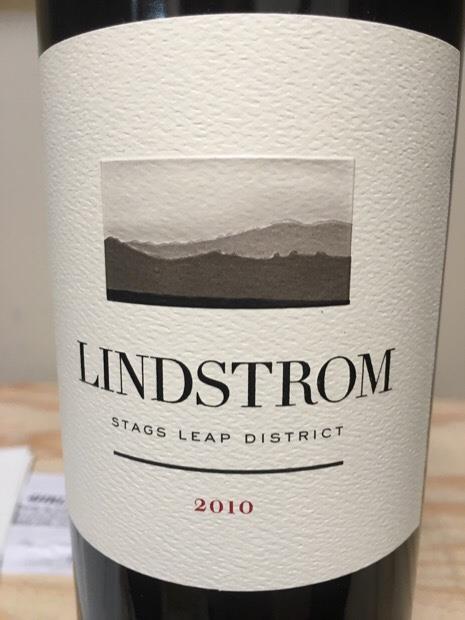
External search
Google (images)
Wine Advocate
Wine Spectator
Burghound
Wine-Searcher
Vintages
2021
2020
2019
2018
2017
2016
2015
2014
2013
2012
2011
2010
2009
2008
2007
2006
2005
From this producer
Show all wines
All tasting notes
|
| Drinking Windows and Values |
| Community Tasting History |
| Community Tasting Notes (average 92.2 pts. and median of 92 pts. in 16 notes) - hiding notes with no text | | | Tasted by Insane Diego on 2/5/2019 & rated 94 points: Stags leap CAB at its best! Fantastic wine hitting all the boxes now and maybe some room to grow.
Opened for 90 min and decanted for 10. Great nose of berry and some musty earth. Big on the front with some chewy ness, tannins still present but softening, nice velvet smooth texture on the back end with good finish.
Complex enough to find different flavors throughout the bottle. I had blackberry's and a bit of cooked plums and then later I had distinctly green pepper and even some watermelon. Super enjoyable and complicated for this amateur to describe.
I think this will continue to age well, although I canít imagine how much better it could get!! (1480 views) | | | Tasted by mrmikemtr on 7/8/2016 & rated 90 points: Still very early. This needs 3-5 more years of sleep. Very closed down. Big chewy currant. Big tannins. Good potential if you have bottles. (2273 views) | | | Tasted by MAXIMUM SATISFACTION on 5/8/2015 & rated 95 points: Plenty of depth and structure here. Still young with a moderate amount of tannins. I suspect it's closed off in some areas. Nonetheless it has a fragrant nose and silky smooth mouthfeel. Restrained flavors of kalamata olive brine, smoked meat, black fruit, menthol, and anise emerge. Much more elegant than expected. Give it another 2 years or be prepared to decant a least 5 hours.
http://www.maxsatisfactionwine.com/post/118496276474 (2951 views) | | | Tasted by Niagara on 11/24/2013 & rated 92 points: This is darn good wine and at least as good as some 3X the price. The '10s are really promising to be a fine vintage -- some real lively acidity and good fruit, without too much alcohol. (3717 views) |
| By Stephen Tanzer
Vinous, May/June 2013, IWC Issue #168
(Lindstrom Wines Cabernet Sauvignon Stags Leap District) Subscribe to see review text. | By Antonio Galloni
Vinous, 2010 Napa Valley Cabernet Sauvignon: An Epic Vintage (Dec 2012)
(Lindstrom Cabernet Sauvignon Stags' Leap District/ Napa Valley) Subscribe to see review text. | By Antonio Galloni
Vinous, New Releases from Napa Valley (Dec 2011)
(Lindstrom Cabernet Sauvignon Stag's Leap) Subscribe to see review text. |
NOTE: Scores and reviews are the property of Vinous. (manage subscription channels) |
| Lindstrom Wines Producer websiteCabernet SauvignonCabernet Sauvignon is probably the most famous red wine grape variety on Earth. It is rivaled in this regard only by its Bordeaux stablemate Merlot, and its opposite number in Burgundy, Pinot Noir. From its origins in Bordeaux, Cabernet has successfully spread to almost every winegrowing country in the world. It is now the key grape variety in many first-rate New World wine regions, most notably Napa Valley, Coonawarra and Maipo Valley. Wherever they come from, Cabernet Sauvignon wines always seem to demonstrate a handful of common character traits: deep color, good tannin structure, moderate acidity and aromas of blackcurrant, tomato leaf, dark spices and cedarwood.
Used as frequently in blends as in varietal wines, Cabernet Sauvignon has a large number of common blending partners. Apart from the obvious Merlot and Cabernet Franc, the most prevalent of these are Malbec, Petit Verdot and Carmenere (the ingredients of a classic Bordeaux Blend), Shiraz (in Australia's favorite blend) and in Spain and South America, a Cabernet Ė Tempranillo blend is now commonplace. Even the bold Tannat-based wines of Madiran are now generally softened with Cabernet SauvignonUSAAmerican wine has been produced since the 1500s, with the first widespread production beginning in New Mexico in 1628. Today, wine production is undertaken in all fifty states, with California producing 84% of all U.S. wine. The continent of North America is home to several native species of grape, including Vitis labrusca, Vitis riparia, Vitis rotundifolia, and Vitis vulpina, but the wine-making industry is based almost entirely on the cultivation of the European Vitis vinifera, which was introduced by European settlers. With more than 1,100,000 acres (4,500 km2) under vine, the United States is the fourth-largest wine producing country in the world, after Italy, Spain, and France.California2021 vintage: "Unlike almost all other areas of the state, the Russian River Valley had higher than normal crops in 2021, which has made for a wine of greater generosity and fruit forwardness than some of its stablemates." - Morgan Twain-Peterson Napa Valley Napa Valley Wineries and Wine (Napa Valley Vintners)Stags Leap District Stags Leap District |
|




